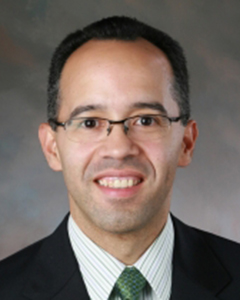STD Cases at an All-Time High
Cases of sexually transmitted diseases (STDs) are at a record high, according to a new Centers for Disease Control & Prevention (CDC) report.
The CDC found that in 2015 cases of syphilis, gonorrhea and chlamydia rose significantly. Cases of syphilis, a bacteria-driven STD that can lead to brain, nerve and tissue damage or death if left untreated, rose by 19 percent in 2015 compared to 2014. Cases of gonorrhea, which can be transmitted during oral, vaginal or anal sex, rose 13 percent, while cases of chlamydia, one of the most common STDs in the country, rose 6 percent. All figures reflect an all-time high in the incidence rate of these STDs, which are the most commonly reported diseases in the U.S.
Why are the Numbers Increasing?
The CDC says these numbers are a call to arms.
“STD rates are rising, and many of the country’s systems for preventing STDs have eroded. We must mobilize, rebuild and expand services – or the human and economic burden will continue to grow,” said Dr. Jonathan Mermin, director of CDC’s National Center for HIV/AIDS, Viral Hepatitis, STD, and TB Prevention.
Other key findings in the report:
15 to 24-year-old made up nearly 66 percent of chlamydia diagnoses and 50 percent of gonorrhea diagnoses.
Gay men made up the majority of new gonorrhea and syphilis cases.
The CDC says there are “troubling increases in syphilis among newborns.”
Gay and bisexual men and young people have the greatest risk of getting an STD.
The rate of syphilis diagnosis in women increased by more than 27 percent, but this group still makes up less than 10 of new syphilis cases.
The agency says part of the reason for the higher rates is that more than half of state and local STD programs have experienced budget cuts that have resulted in more than 20 health department STD clinic closures in one year, leading to less prevention and patient education.
All three STDs are curable with antibiotics, but if patients aren’t coming in to be screened or educated about what they can do to prevent STDs, these diseases can progress and produce worse health outcomes, including miscarriage, infertility, blindness, HIV or even stroke, according to the CDC.
The CDC says greater access to screening and treatment can reduce the spread of STDs, since many cases go undiagnosed and untreated. There are economic consequences for the country’s health care system, too: STD cases cost the system nearly $16 billion annually, the agency estimates.
Prevention is critical because not all STDs can be treated or go away, and some STDs that were previously treated with antibiotics, like certain strains of gonorrhea, are now proving to be resistant to antibiotics. All these things are why we regularly advocate for STD testing, use of condoms and protection and vaccinations where appropriate. In addition to these three infections, the human papillomavirus (HPV) is also a risk for young people. Research has found no correlation in an increase of teen sexual activity after receiving the HPV shot, so parents should feel secure in vaccinating their children against this infection, which could lead to cervical cancer if left untreated.
As the CDC says, we need a national response to the STD epidemic. This is rapidly becoming a public health crisis that puts young people, pregnant women and many other groups at risk. The agency recommends that providers make STD screening a standard part of their medical care, that the public talk openly about STDs and get regular testing, that parents encourage kids to seek the information and services they need and that state and local health departments direct resources to areas that are struggling the greatest with this health crisis.
By using all these approaches we hopefully can prevent this disease from becoming more widespread, and as the CDC says, make sure more people don’t “slip through the public health safety net.”







